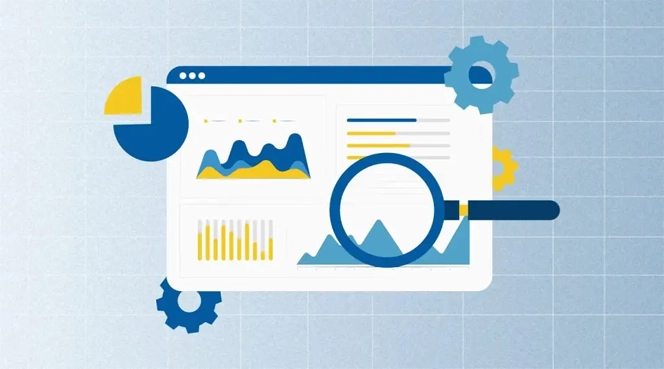There are several ways to get backlinks, but not all of them will lead you to higher rankings. Yet, that’s a fundamental purpose of SEO, isn’t it?
Google’s rankings are influenced by the number of unique domains linking to a page, according to a recent Backlinko study.
For this reason, in this article, we want to spill the tea on how to get backlinks that will bring you superiority in search engines.
Whether you’re wondering how to build a backlink to your website or simply looking for the best strategies, we’ve got you covered with tips that will help you get ahead!
Let’s make backlink building easier—keep going!
Why Relevant Backlinks Play a Big Role in SEO?
Before learning how to get backlinks, let’s talk about why they matter.
Google values backlinks as a trust sign, but not just any links—quality and relevance are key! That’s why we always focus on finding relevant backlinks from trusted sources instead of chasing random ones. A strong, natural link profile improves your website’s authority, and Google rewards that with higher rankings.
So, if you’re wondering how to build powerful backlinks to your website, our advice is simple.
Aim for links that actually add value, not just numbers!
So, thinking about how to get valuable backlinks? We’ve got some tips for you!
How to Get Backlinks: Our Tips For 2025
As an SEO enthusiast, you probably already know there are tons of ways to get backlinks. But not all of them are good for your website. Some methods, like buying links, can actually hurt your backlink profile and your rankings.
So, how do you get the good ones? Well, instead of going down the risky path, let’s focus on how to build a backlink to your website the right way.
Tip 1: Try Simple Link Exchange Tactics
So, link exchanges are fine as long as you don’t do them excessively, which is against Google’s good policies. It’s a practice where two websites link to each other’s content for increased search visibility on the search engine results page. So, to find link exchange opportunities and figure out how to get backlinks, you should find suitable websites.
The process of finding websites for link exchanges is called link prospecting, and there’s no link building strategy without it. To find websites and contacts to reach out to for link exchanges, consider the following steps:
- When we speak about link building strategy, we always suggest choosing the best method that fits your goals. Whether it’s A-B-C changes, guest posting, or link insertions, it’s important to focus on how to get links that actually matter. For us, it’s about finding the right path to build backlinks to your website that are both relevant and powerful.
- Next, select topics to target and list similar and relevant topics the websites you reach out to should cover. For instance, if your website is about digital marketing strategies, target websites that discuss social media marketing, SEO techniques, email marketing, or content creation.
- Specify the criteria of metrics you’ll follow and that are important for you, such as the domain rating, organic traffic, relevance, etc.
- Create a list of prospects with the help of Ahrefs by heading to the “Content Explorer” tab and searching for your relevant keyword and you’ll have all the info you need. You can even filter the websites through metrics you need by clicking on “+more filters.”
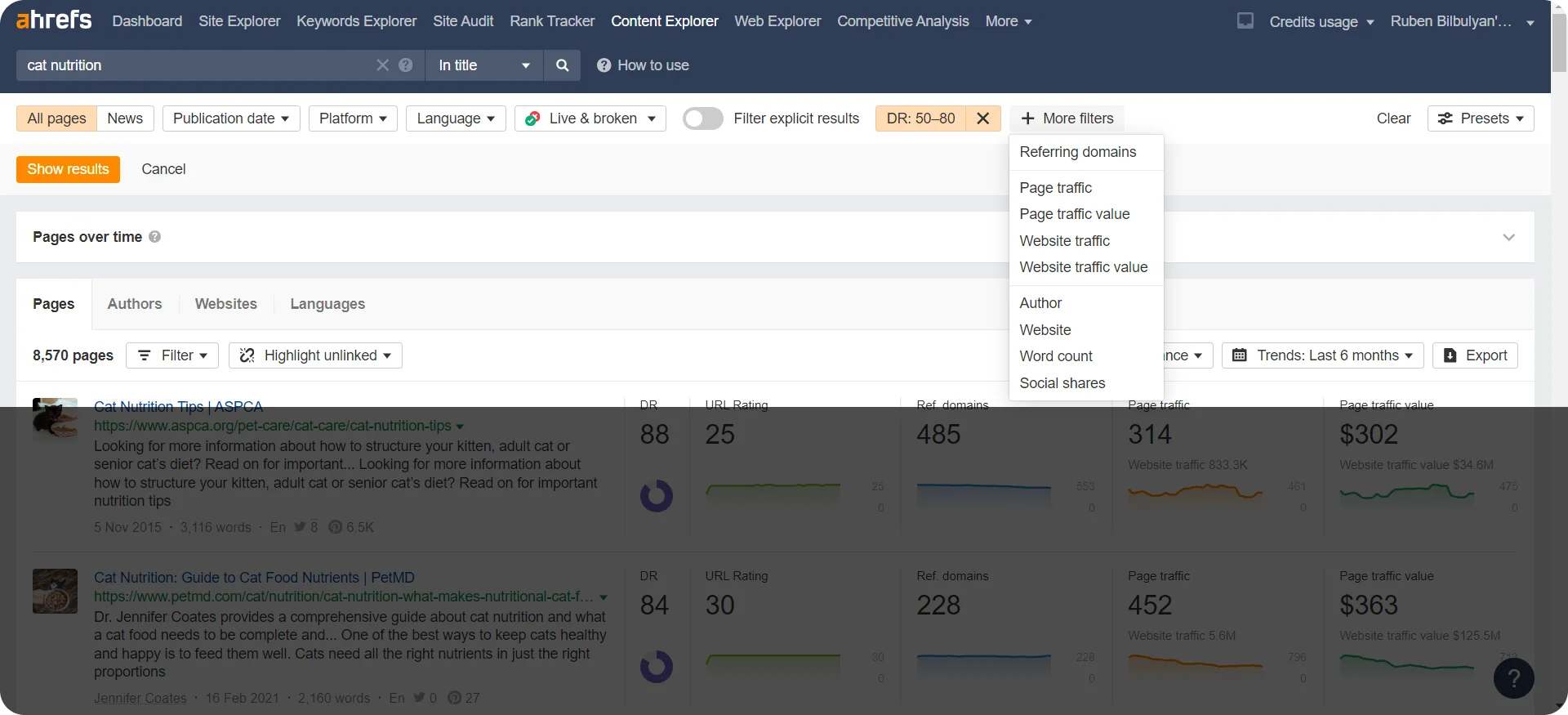
Following the previous step, find who you’re going to contact such as the link builder of the website, the SEO manager, the content manager, the editor, or someone else.
Finally, create an email sequence to give a start to your link exchanges. To complete it successfully, do some research on their websites and write personalized messages. Introduce your message and yourself. Avoid using words that echo that you’re trying to sell them something. And don’t forget to add a call to action at the end.
Last but not least, prepare follow-up messages for when they don’t answer immediately; it’s pretty common, so you shouldn’t worry. If managing link exchanges and outreach becomes too time-consuming, consider outsourcing backlinks to professionals who can handle the prospecting, contacting, and follow-ups for you.
This is how to get backlinks with the help of link exchanges.
Next, let’s explore guest posting!
Tip 2: Offer Value Through Guest Posting
Guest posting, if you haven’t heard of it before, as the name suggests, is the practice of writing blog posts for websites other than your own. You provide great content – the host website receives value, and your content receives attention from their existing audience. The benefits of guest posting include more brand exposure, increased traffic, and building credibility.
Your blog post is like a guest to their blog; through it, you also earn links back to your website – organic backlinks. This, in turn, signals Google or other search engines about your website’s credibility and authority.
Well, that’s one answer to how to get backlinks. But you need an invite to be a guest, right? There are several ways to find out how to get high-quality backlinks through guest posting, including the usage of practical tools like Ahrefs. Learn more about the step-by-step process of finding websites for guest posting by clicking on this guide to guest posting we made earlier.
Other ways you can initiate guest posting opportunities are through:
We’ve found that other great ways to start guest posting opportunities include…
- Networking – through social media, online and offline events, and other ways of networking you can find.
- LinkedIn: announce that you’re open to such opportunities or reach out to new or old acquaintances to start a conversation with them.
- Google search: by typing “your target keyword” + “write for us,” “contribute as a guest blogger,” “guest post guidelines,” and you’ll easily find websites in your industry that accept guest posts.
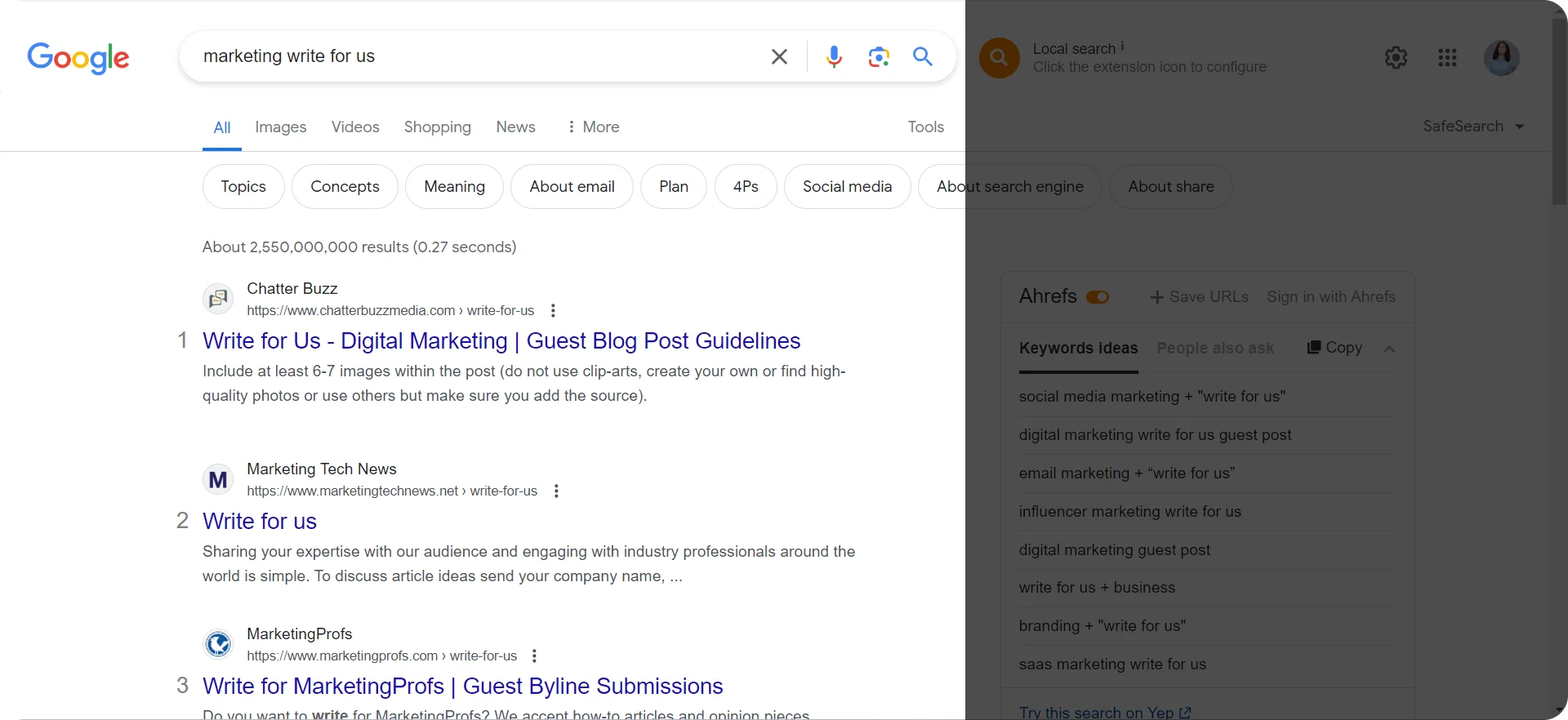
After you make a list of the websites that accept guest posts and start a conversation with them through email outreach, you can provide value and receive organic backlinks.
Tip 3: List Your Business On Relevant Listicles
In your quest to find out how to get backlinks, you should consider listing your business in suitable listicles.
Listicles are articles written in a list format that present products, films, educational material, and much more. They are effective when written well because they provide information in a short format, which means they’re easy to digest.
The above is true because due to their format, they don’t try to ramble too much information in one go, instead, they provide links when the reader needs to explore more information to get the answers they need – that can be a link to your web page.
Here’s a simple step-by-step process to follow to find listicles to list your business in:
- First, add the Ahrefs SEO Toolbar to your browser and log in to your account.
- In Google, search for “top,” “list”, or “best” + “your keyword/product type,” for example – top + human resources software.
- With the help of Ahrefs, export the results as a CSV file, as shown in the screenshot below. You can also try other keywords to get other SERP results and merge all CSVs.
- Next, clean this data so you have good and reputable listicles to work with.
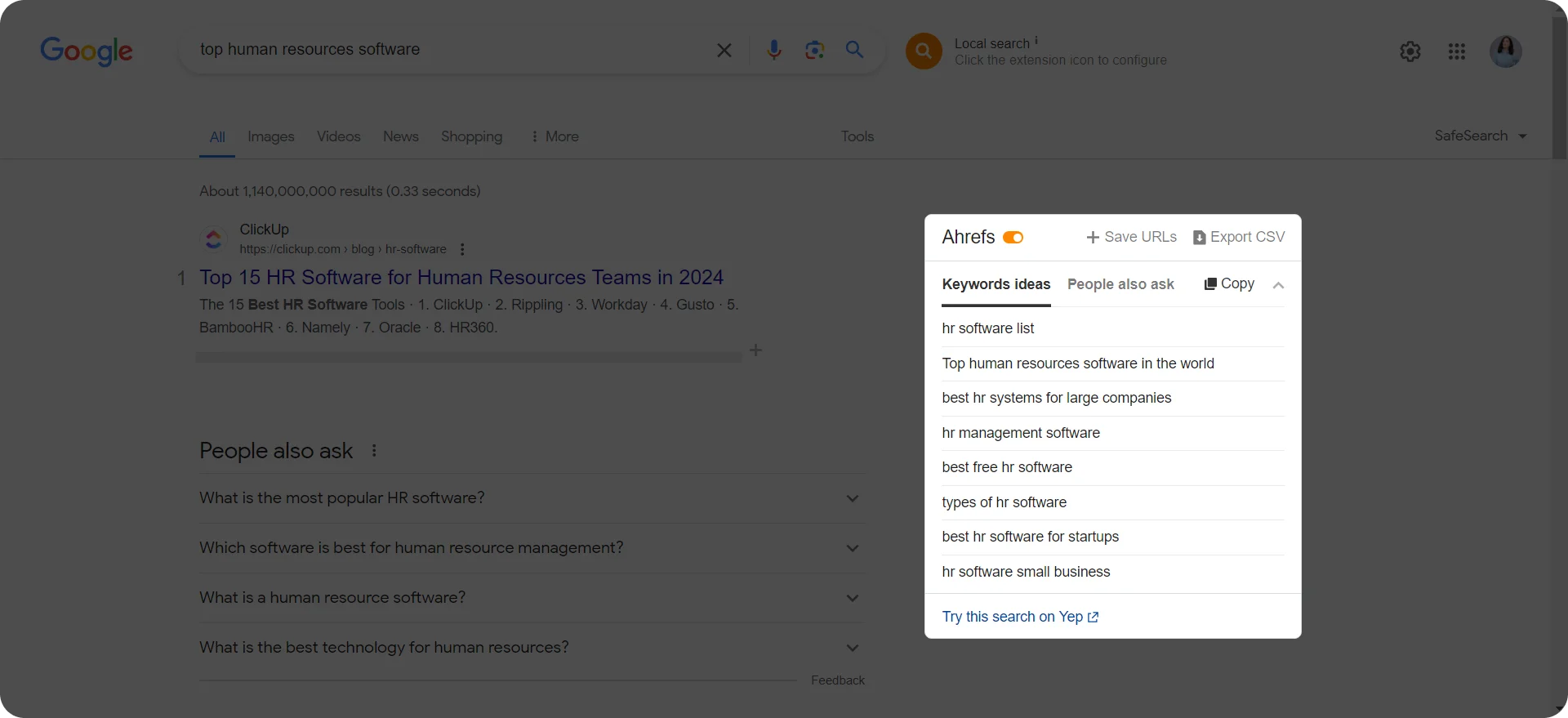
You should remove duplicates and delete websites with low traffic and low DR (whichever number is low for you.) You can easily do this in Excel or Google Sheets since Ahrefs export files include this data.
Also, according to a case study by Ahrefs, you should segment this list according to:
- Lists that don’t mention your product or service.
- Lists that mention your business without a link.
- Lists in which you are ranked lower than your competitors.
Now, find contact information like the author of the listicle or the website contacts so that you can reach out to them to list your product/service in the listicle. You can do it manually or with an email finder tool. This is where you must prepare a great outreach email and reach out to those contacts with a clear message and your request.
Tip 4: Develop Linkable Assets to Get Backlinks
One of the best natural link building tips is that you should create content that satisfies the reader’s search intent and helps them with the information they want to find.
Linkable assets are usually long-form and SEO-optimized content capable of ranking well. Such formats are blog posts, infographics, whitepapers, ebooks, and videos. Linkable assets are also well-researched and packed with information that’s usually hard to come by. Carefully selected blog topics can make your linkable assets even more valuable and attractive to readers and other websites.
Having said all that, let’s discuss how you can ensure your content is linkable and what other formats you can call a “linkable asset”.
Guides
Guides or how-to guides provide detailed instructions on how to complete a task from beginning to end. How-to guides may also provide best practices, examples of desired outcomes, as well as trends and insights into guide pieces. Guides can also come in different formats such as downloadable PDFs, images, or blog posts, such as this one.
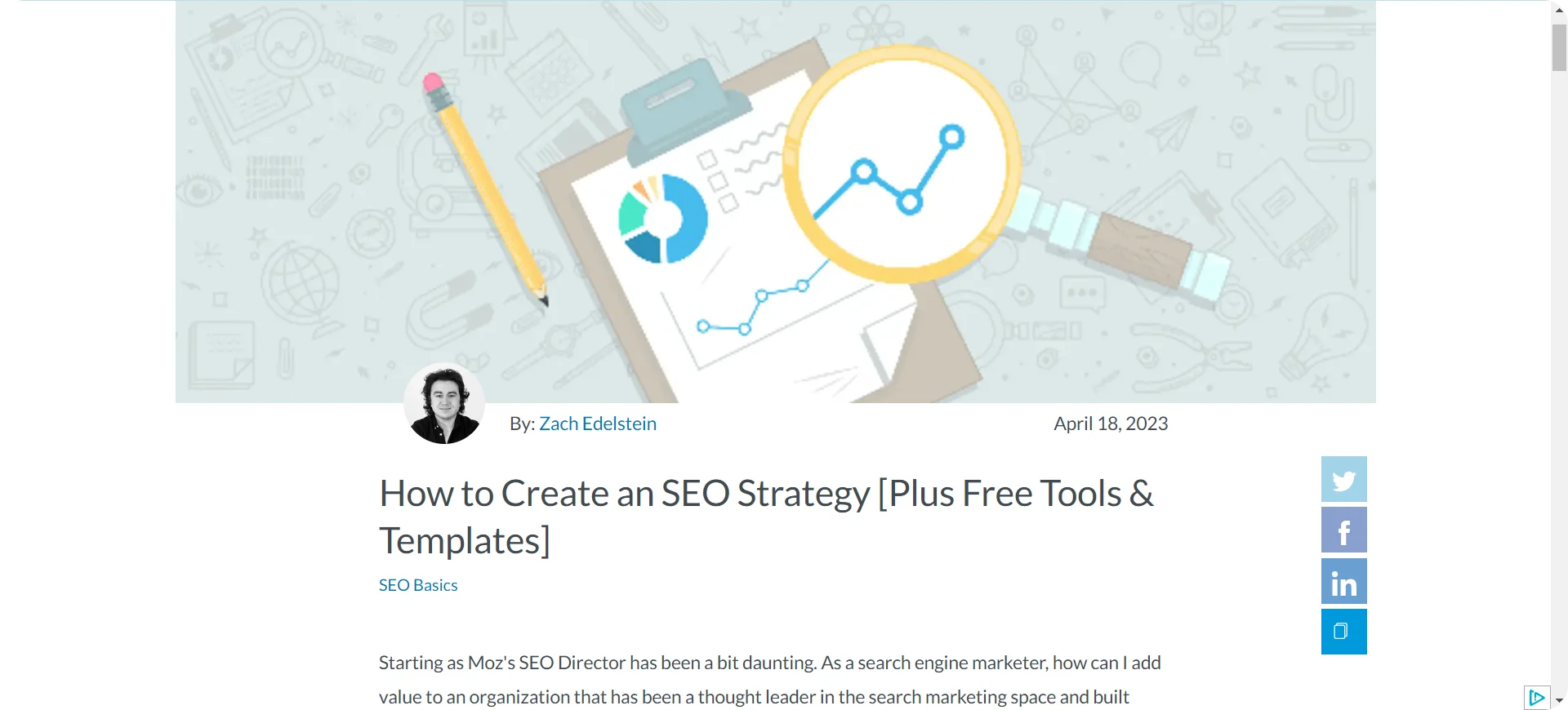
Case Studies
A case study is a detailed review of how your company, product, or service has benefited previous customers. It can take the form of a webpage, document, or slide deck that presents quantifiable, actual outcomes. To support points made about the results of a project, a great case study also includes statistics and research.
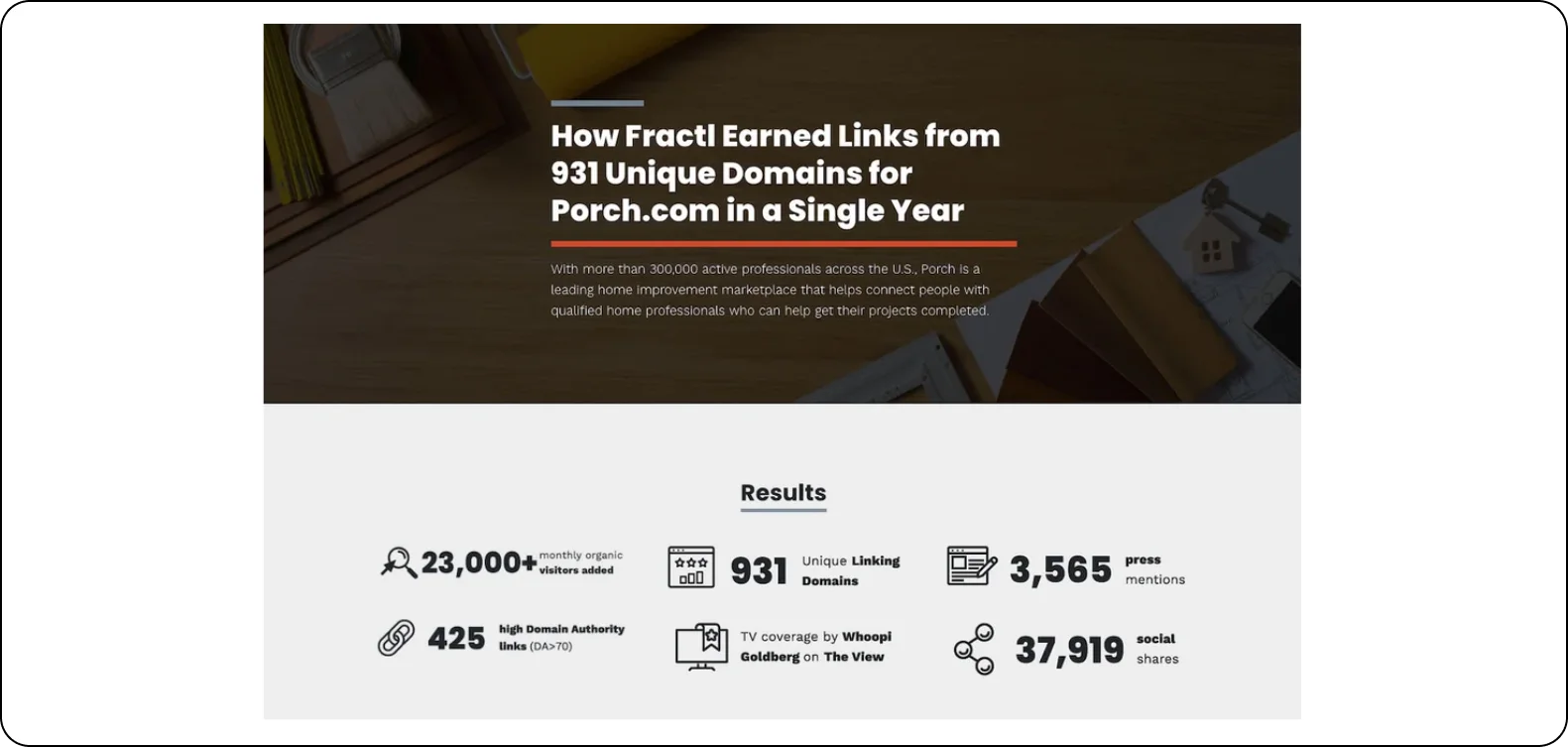
Statistical Reports
Most websites are in search of original statistical data that serves as proof for making statements in articles. So, they’re in demand and can increase your chances of getting organic backlinks if your reports are up-to-date and keyword-optimized to rank well. You can create statistical reports by interviewing industry experts, conducting studies, and carrying out elaborate research.
Tip 5: Learn to Do Competitor Analysis
Competitor backlink analysis is another way of getting organic backlinks in the sense that it gives you new insights you might have missed. Since you and your competitors share quite a similar target audience, as you analyze competitors’ backlink profiles, you will discover the following:
- New sources of backlinks
- Areas of backlink profile improvement
- New and natural link building strategies
- Well-performing content formats you haven’t tried yet
- Things you should never do if you want to gain a competitive advantage
Here are a few clear steps you can take to complete competitor analysis with the help of Ahrefs.
Step 1: Look for your direct competitors by entering your website in the search bar and going to “Organic Competitors” – these are your domain-level competitors.
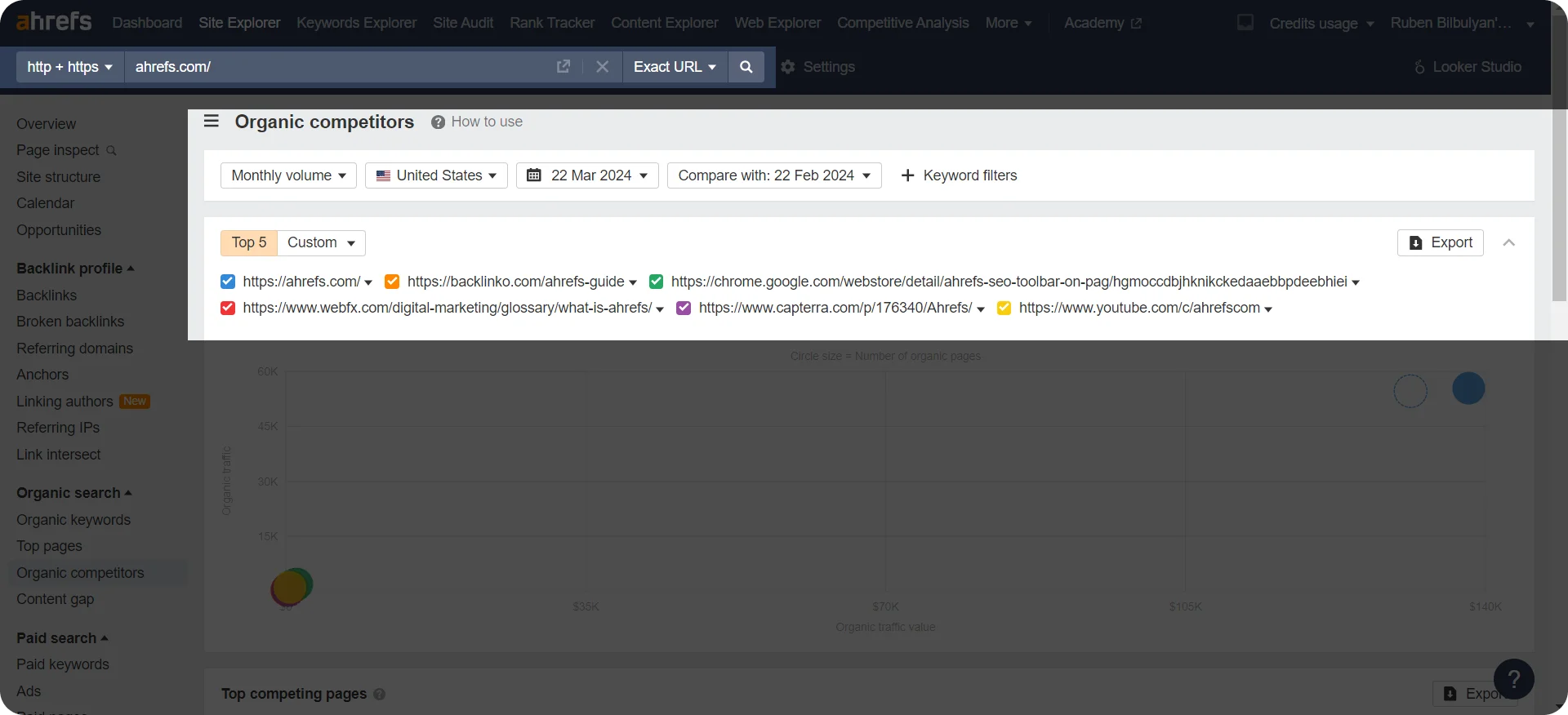
If you scroll down, you can also notice that Ahrefs provides you with top competing pages for the page you’re searching for. Here, you can look up their domain rating, organic traffic, common keywords your competitors target, and other metrics of evaluation.
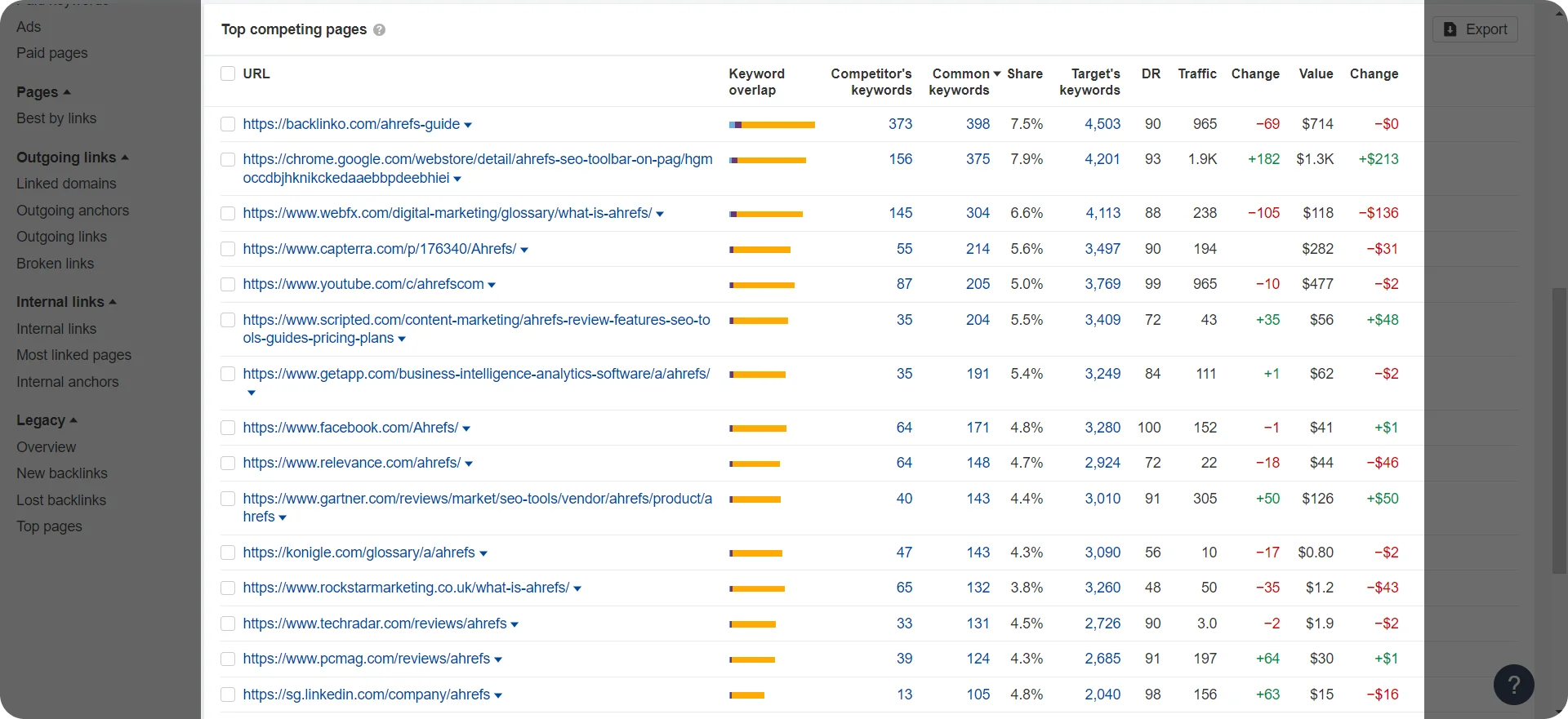
Step 2: Your second step here will be evaluating the backlinks of your competitors. Do they have the metrics you’d prioritize(high DR or organic traffic)? Do they have backlinks you don’t have? Do the backlinks have anchor texts with unique keywords you should consider?
All of these insights can be beneficial for moving on with your competitive analysis.
To Wrap Up
So, getting powerful backlinks doesn’t have to be complicated. Are you focusing on quality or just chasing numbers? The key is to find relevant backlinks that actually help your website grow.
Keep it simple, stay consistent, and make connections that matter.
Remember:
- Quality over quantity – A few strong links beat hundreds of weak ones.
- Relevance is key – Link to websites that match your industry.
- Build relationships – Backlinks come easier when you connect with the right people.
So, what’s your next step in getting backlinks?
We hope these tips have been helpful in guiding you toward better backlinks for your website!If you’re looking to build strong, relevant backlinks, feel free to get in touch—we’d love to help you out!
FAQ About How To Get Backlinks
Are backlinks free?
Backlinks are free when you earn them through the organic link building strategies mentioned in this article.
How do I know if my backlinks are working?
You can use tools like Ahrefs to track the growth and performance of your backlinks.
Can backlinks help me beat my competition?
Yes, if done right! Building strong backlinks can push your website ahead of competitors who haven’t invested as much in link building strategies.
How fast can backlinks improve my website ranking?
It depends! While backlinks can have a positive impact fairly quickly, it usually takes a few weeks.
How many backlinks do I need for better SEO?
Quality over quantity! Focus on building a few powerful backlinks rather than gathering a large number of spammy ones.
Quiz Time
Let's put your knowledge to the test.
Leave your email below to get a SayNine certificate!
Are you sure?




